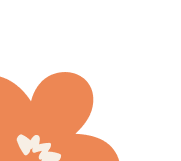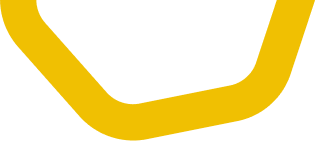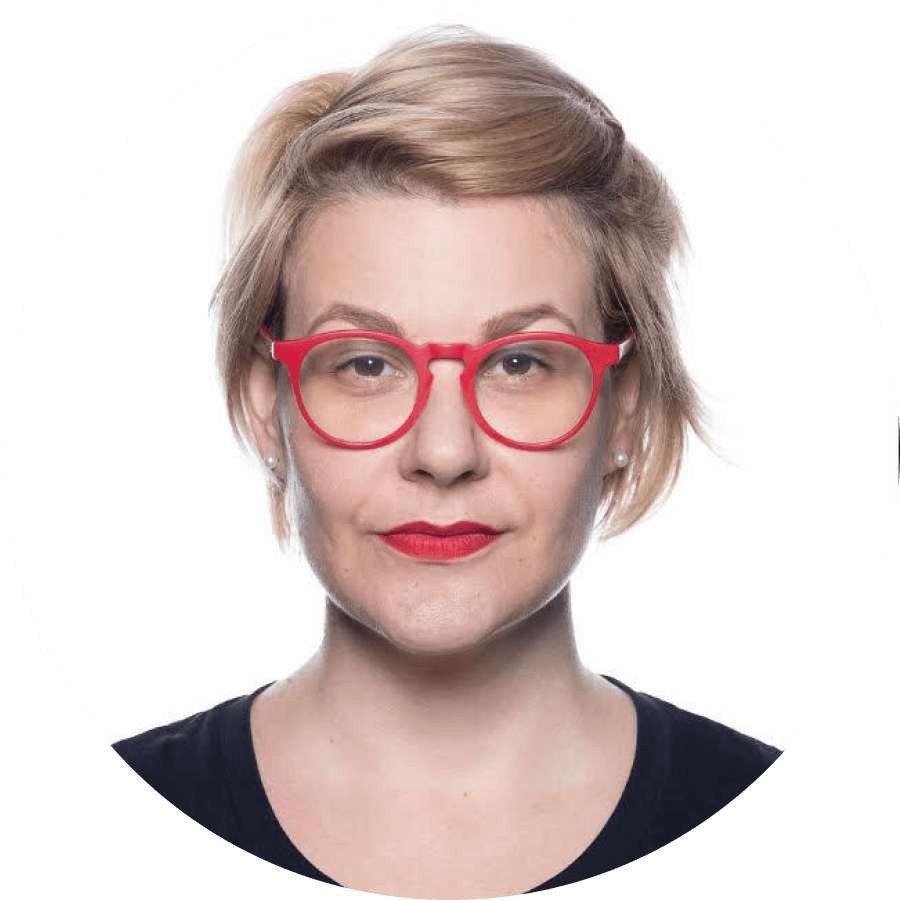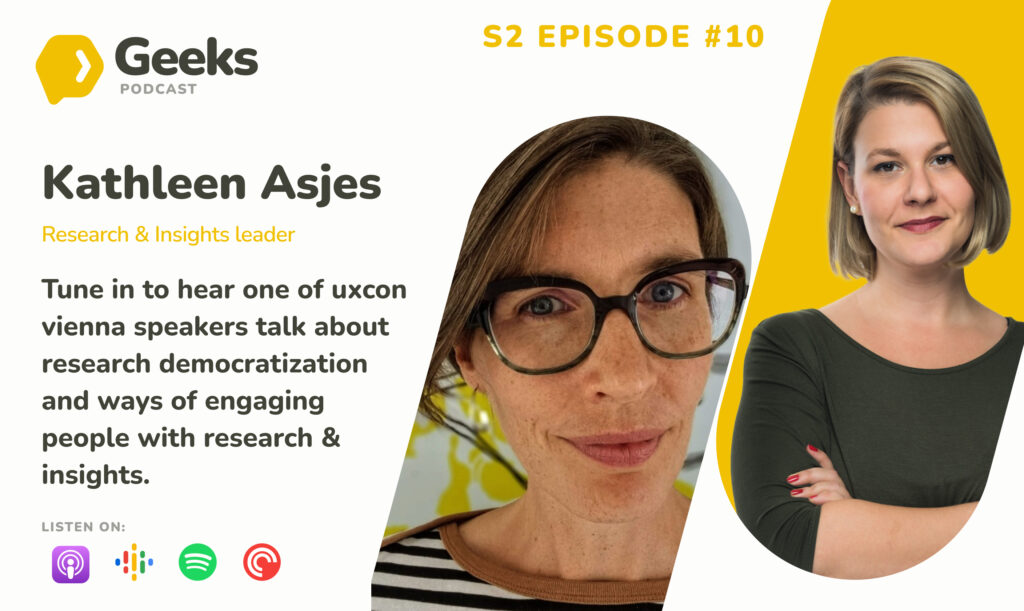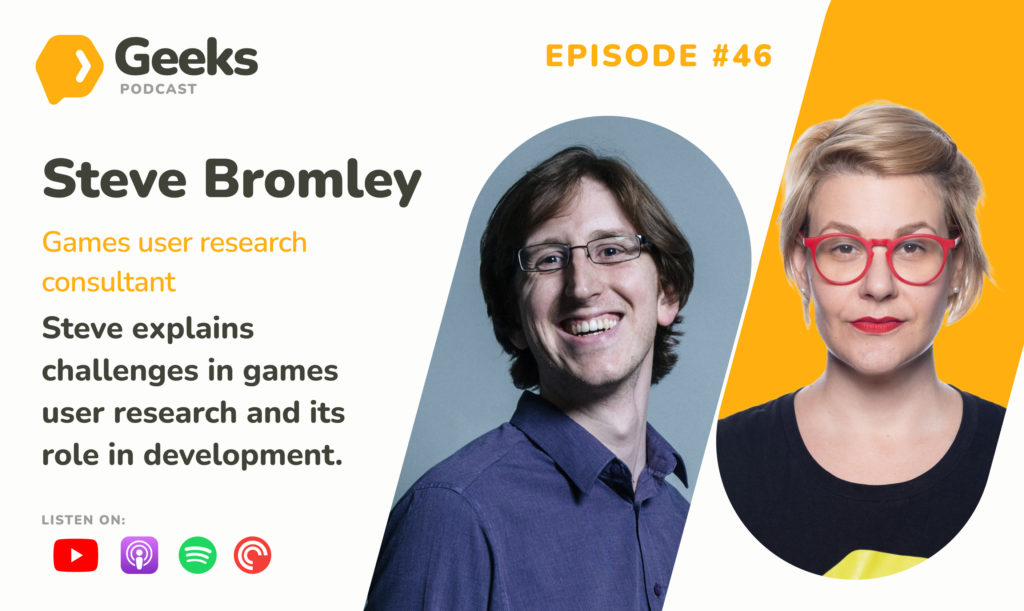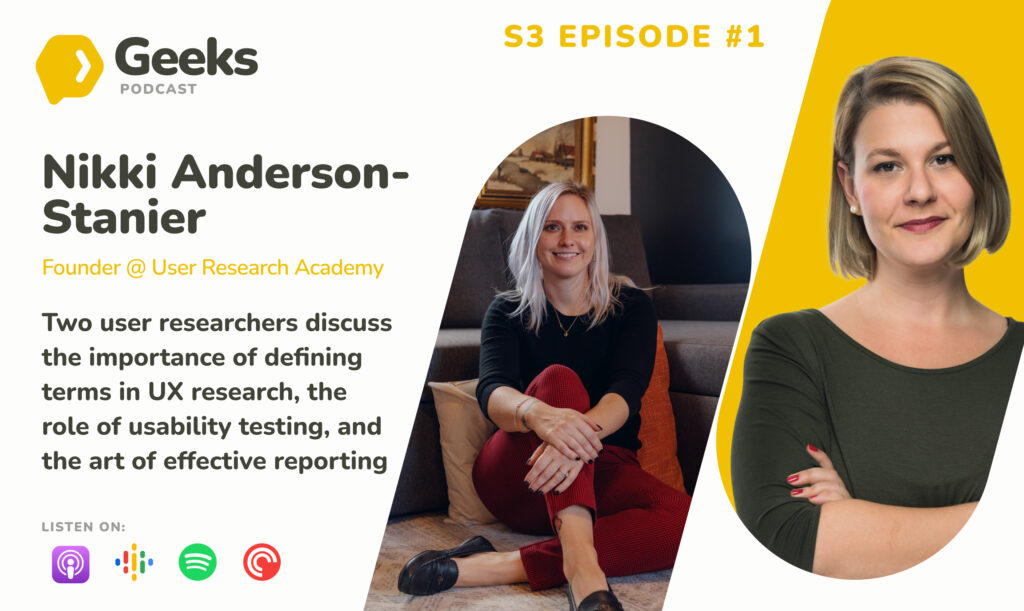Welcome to episode 10 of UX Research Geeks, the podcast exploring user experience research. In this second part of our digital healthcare special, we talk to Sayali, a senior UX researcher at Roche. Sayali’s academic research background centers on digital solutions for health promotion and behavior change. Join us as we explore the intersection of behavioral science and user research, the impact of frameworks in stakeholder management, and the role of research in today’s work landscape.
Episode highlights
00:01:44 – Sayali Phatak’s Transition from Academia to Digital Health
00:10:22 – Balancing User Research and Behavioral Science
00:18:19 – The Value of Incorporating Academic Studies into UX Research
00:26:13 – The Concept of “Bullshit Jobs” and Impact in UX Research
00:33:56 – Measuring Success in UX Research
00:35:57 – Connect with Sayali Phatak on LinkedIn
About our guest Sayali Phatak
Sayali Phatak, a UX Research Lead at Roche and a Human Factors Engineer at mySugr, combines her background in health promotion, experimental design, and behavior change with UX research methodologies to empower individuals and communities in managing health. Based in Vienna, Austria, she focuses on appreciating users’ expertise, individual differences, and self-empowerment. You can connect with Sayali on LinkedIn to learn more about her work.
Podcast transcript
[00:00:00] Tina Ličková:
Hello and welcome to UX Research Geeks. I’m your host Tina Ličková, a researcher and a strategist, and this podcast is brought to you by UXtweak, an all-in-one UX research tool.
This is the 10th episode of UX Research Geek and the second part of a digital healthcare special. We started a special with James in the last episode, and this time we had a great chat with Sayali, a senior UX researcher at Roche. Prior to making her jump to the digital healthcare industry, Sayali did research in academia, focused on designing digital solutions for health promotion and behavior change.
In this episode, we covered why she thinks behavioral science and user research should work closely, how frameworks can actually help in stakeholder management, and we also explored our mutual thoughts on why research is hopefully not one of the so-called bullshit jobs.
Hello, Sayali.
[00:01:04] Sayali Phatak: Hello. How are you? I’m doing well. After a weekend of being extremely tired and exhausted, but feeling good now.
[00:01:13] Tina Ličková: Okay. So we will squeeze you of your energy right now a little bit.
[00:01:17] Sayali Phatak: But it’s still morning…
[00:01:20] Tina Ličková: Sayali, there are not so many, I wouldn’t say there are way too many user researchers in Vienna, Austria. Finding your profile was really interesting.
I would be really curious, and I hope you can tell our listeners who you are, how did you end up in Vienna, what’s your next plans, and what did you do in your life? Yeah, that’s all the questions I have.
[00:01:44] Sayali Phatak: Awesome. Yeah, sure. But you’re right. Yeah, there’s not much UX research and user researchers in Vienna, which I did not know before I moved here, I have to say.
So I’m a UX researcher. I transitioned from academia to industry. A few years ago I had an academic background in nutrition and exercise science. And when I was starting off with my undergrad and also masters I basically really wanted to eventually become an exercise physiologist and work with athletes and improve performance.
And as my master’s went on I ended up taking some classes in psychology and I think sort of two things happened then. One, I started getting really interested in studying health behavior and psychology and then basically realized that I don’t care so much about improving athletes performance by a few seconds.
And I think that at the time my thought was that. People are not even walking and I’m trying to improve somebody’s performance by three seconds. I started getting away from that.
Yeah, so I got really interested in studying psychology, behavioral science and wanted to work on designing solutions that can help. People need healthier lives. And the second thing that I think happened was that I got interested in research as I worked on the master’s thesis and both things I was pretty happy about.
And eventually and then enrolled in a PhD program where I got to study health behavior change and designing interventions for health behavior. And I think during that time I got really lucky because my PhD advisor and mentor was a clinical psychologist and behavioral scientist who combined methods from user centered design and design thinking with those from behavioral science to basically design digital health solutions.
So I got an introduction to the digital health world. And got to immerse myself in both those worlds during the five years of my PhD. And then, yeah, I wanted to leave academia because the pace in academia is slow. I didn’t really care for publications. My first paper, I remember, got published a year and a half after I did the research.
The technology was obsolete by then. And I really wanted to just see my work applied in a real world setting and faster. And really be yeah, the time I thought it would be great to like work with product teams and do research there. And then that’s how I transitioned out of academic research and then ended up looking for a UX research position also in the digital health industry at mySugr here in Vienna.
And yeah, the time I was in the U. S., which I did not mention, and I just wanted to move to Europe really. Yeah, I was, I didn’t have Austria necessarily on my radar. It was more wanting to move to Europe and found this great opportunity and moved.
[00:04:40] Tina Ličková: And now you work in mySugr and Roche. It’s a little bit hard to understand. Can you maybe explicate on that one?
[00:04:49] Sayali Phatak: Sure. Yeah. mySugr was basically bought by Roche in, back in 2017. So I still work with my mySugr and Roche. It’s essentially the same company and I’m still doing UX research, just working less these days with product themes. Actually, I’m doing more foundational research and farm business strategy and so on.
And just to, just that we have a little bit more context, what is the topic that you are working on?
Right now I work with diabetes solutions for diabetes, so I work for Rush Diabetes Care, so different solutions in the diabetes space.
[00:05:29] Tina Ličková: Mhm. And this is interesting what you were just telling before because you mentioned behavioral change and whether we are now having this healthcare special also talking to anybody from these four excellent experts on the topic. Everybody’s mentioning behavioral science, behavioral change. And you are really big into this one, so I would ask you why and why is it even important? How is it beneficial? In your work.
[00:05:57] Sayali Phatak: Sure. So yeah, I think having worked in both runs, I would say that the behavioral science aspect of it helps you, at least in the healthcare space, really also maintain focus on the health behavior, because at the end of the day, we’re trying to, you know, understand, predict and influence health behavior and help achieve health outcomes.
So I think that perspective helps maintain focus there. And behavioral science also provides a framework to help guide your thinking about this particular problem. Let’s say when it comes to diabetes, this is just an example of a medication adherence, for example. So that would be the end health behavior.
And so it provides frameworks to help think about. The problem is: not only focus on user needs, which we tend to do with the design thinking process and user research, but also maintain focus on the health, which is the end game. I always think like whenever I talk to designers, they think about features.
This is a feature and that’s a feature that we want to implement, but I think how I think about it would then be, I’m thinking of that feature as a behavior change strategy, trying to understand what is the underlying mechanism of change that it’s supposed to that, that is, that exists does then supposed to influence whatever behavior that might be.
So I think it provides that sort of you get equipped with thinking about it in terms of how a feature is influencing behavior. So I would say that’s one of the aspects it’s beneficial in.
[00:07:29] Tina Ličková: Is there any kind of example that you could share from your practice, that we can imagine what you are talking about? What kind of things are influencing the behavior we are looking at?
[00:07:41] Sayali Phatak: Sure, so let’s take an example of a project that I used to work on. So we had designed an app, that was a goal setting app. It was supposed to, the app basically assigned step goals, daily walking step goals. And the idea was that using step goals to basically help increase someone’s physical activity behavior.
So goal setting is like step goal is the feature. The one other way you can think about it is that how are these step goals – what is the mechanism there that is increasing health behavior? So maybe increasing, let’s say achieving step goals and getting points for it, which we call positive reinforcement can in turn, say, impact self efficacy so somebody’s confidence and being able to walk more and in turn actually help them achieve the goals and maybe hopefully eventually even keep walking more than general. So thinking about it in terms of not just the goal, but what exactly is the goal, step goal doing? What exactly is achieving those points doing that help somebody change that behavior? That makes sense.
[00:08:55] Tina Ličková: And what is the kind of, and I’m thinking, because of course it comes to my mind in German and not in English but what, what would you say, are the practices that you put into and steps or interventions that you are offering the people in order to achieve some goals?
[00:09:18] Sayali Phatak: What the goal in itself becomes the intervention, at least if it’s still sticking to the example of is the intervention. So our points, if that’s how you design it. And maybe you, I don’t know, design it in a way that you, the person, gets certain points or something when they achieve a certain goal.
So we, I would think of that like a, from a behavior change perspective, that itself would be, goal setting would be then this behavior change intervention. I don’t know if that answered your question.
[00:09:49] Tina Ličková: I’m just thinking of, because if somebody is not working that much with behavioral science, but wants to, and what would be the right, it’s a little bit Nita level, what I’m asking here, but what will be the right usage of behavioral science in apps that should motivate you to change your behavior? And how do you test it, how do you actually research it? What would be the right intervention? I called intervention, which is probably not the right expression. Sorry for that.
[00:10:22] Sayali Phatak: Okay. Yeah. I think I understand what you mean. So I would say it always depends on the domain, right? There might, there’s going to be a whole wealth of literature, let’s say in the diabetes domain and physical activity literature to even, recently there’s been a lot of research with the COVID vaccination uptake.
These are all health kind of problems. So I would say firstly, it depends on the domain. The second thing is that there are some frameworks, because obviously this problem of no problem with this question of how do you merge this world of behavioral science and user centered design is not a new one.
There’s a lot of academics who tried to find solutions for it. And there are some frameworks, like one called the ideas framework, I believe. That I recently came across, which also and also something called the behavioral design thinking approach. So they basically have suggested frameworks where you can bring together both of these worlds in the design process.
So I think there are these frameworks that can help guide the thinking and then exactly what intervention you design would really just depend on the particular domain because, maybe there’s already a wealth of literature that says, Hey, what tends to impact vaccination uptake in these communities in this particular type of target population.
And then you have to work together to basically find appropriate interventions for your specific, I would say population under investigation. And I would even say that’s where user research can actually come in because I see again, like both worlds are trying to understand, predict and influence behavior, right?
We are designing solutions. They have different starting points. Behavior scientists will focus on the behavior, diagnosing it as a behavioral problem, looking at, okay, what is impacting and positively or negatively impacting the behavior while user centered design will start from empathizing with the users and talking to users and observing users and understanding user needs.
That is the focus. So behavioral science emphasizes the need to use evidence based strategies. What is already known to impact this behavior? What is already and how can we basically target those factors to help somebody achieve whatever that target behavior is. So I think that user research can actually bring in that empathy and talk to the specific population that you’re designing for and then combine it with what is already known by the behavioral science world.
But yeah, it’s not easy. I also read somewhere like somebody was talking about in a paper that it can lead to conflicting ideas. So something that you surface as the user needs and what the science says is a strategy that actually helps could be conflicting and maybe they don’t work well together.
It’s a complex problem. But there are some frameworks that can help at least figure it out, to guide how to guide the process.
[00:13:33] Tina Ličková: I was just thinking about the conflict because what you are basically saying is that we as a user researcher we started to stay open and go into the research without knowing how people will behave and trying to figure it out, trying to observe and then make analysis of it.
Behavioral science comes and has already a little bit of a, I wouldn’t say solutions, but has ideas on how to correct a behavior that we didn’t yet fully research on. Have you been fighting this collision yourself in your work?
[00:14:07] Sayali Phatak: Yeah, that always happens. And that’s why I think working together, even with let’s just say like goal setting right like you could say that okay goal setting is known to improve.
Going back to the same example, so I can stick with it. Let’s say all the literature says that setting step goals or can improve health behavior, but at the end of the day, like for your particular population and their needs, what the literature tells you might not necessarily fit who you’re designing for.
It might not fit in that ecosystem. Maybe this is just an example, but maybe the step goal is just one little feature, which is part of an app. So maybe it doesn’t really fit in that ecosystem. And it is about trial and error and finding out what works for your specific population. I think you’re always going to Enter into this conflict, but that’s exactly why designers and researchers and behavioral scientists need to work together.
[00:15:10] Tina Ličková: Okay. And this is the point where I was also thinking about asking you, because you also mentioned a framework or something, which allows you to go and step out of the silos. What is your experience there?
[00:15:26] Sayali Phatak: In general, I think, a lot of teams, a lot of digital health companies, actually not even, they don’t necessarily even have behavioral scientists on teams yet.
It’s a very new addition, let’s say to product teams. I have spoken to a few colleagues who have a behavioral scientist actually as part of product teams now. So I would say cooperation between these two worlds is a very new thing that is hopefully going to become common practice. And the silos. I would say it exists because the behavioral scientists are not really in the game yet.
But the frameworks basically guide you through how in which phase of the design process can you know Where you can bring in behavioral science. So let’s just say initially, let’s say there’s a phase with different design thinking processes. Let’s say first is the empathize phase with the empathize phase and talking to users you can also maybe do a secondary research and try to understand the behavior. So this is just an example. But for every sort of phase of this design thinking process, they have ideas for which, where design can bring in something and where behavioral science can bring in something to make sure that you’re using the evidence as well.
You’re making sure you understand the problem domain as well, but you also make sure that actually you’re involving users in this process. And you’re also using best of both worlds, if you will, like behavior for example, from design thinking, you also- It emphasizes involving end users in the process, right from the beginning, like end to end things like getting user feedback regularly or rapid prototyping and stuff, which are new to the behavioral science world.
So these frameworks basically just bring in the best of both worlds to hopefully design solutions that really impact health behavior and are user friendly and engaging and whatnot.
[00:17:31] Tina Ličková: Yeah, it makes sense to know the touch points where it’s or touch points phases where it’s important to think about it when you say best of the both worlds, I’m thinking about your academic history. And I’m thinking about it, because we were having coffee in the city center of Vienna and we were a little bit like old ladies bitching about people not going and doing their work in digging deep into desk research.
And now we were like: Oh, maybe people do, but we don’t just talk about it. But what is your look on why we should be more digging into academic studies and classical psychology or even in science. Why are you missing it? This is a really interesting point for me.
[00:18:19] Sayali Phatak: Yeah, okay, this could be just my opinion, but to be honest, like someone in someone has probably tried to answer the question that you have or something similar.
And sometimes, and this again could be just me and maybe the little world that I operate in, but I sometimes feel like we just start from scratch when there’s a wealth of literature out there. So to me, just like secondary research just helps you find others who’ve answered the questions and also understand what they found and also to understand the space that you’re operating in.
So the bigger domain really lets say I operate in the diabetes space. There’s a wealth of literature about, you know, what impacts health behavior related to diabetes and self management of diabetes? What are the common barriers that people face when trying to adhere to diabetes therapy and so on. So I just think that there’s a lot of literature that should then factor in and help you design your research. And even just simple things such as your interview guide to understand what you should find out more about and so on.
And I don’t think that people don’t do it at all. Sometimes I think that we don’t. And maybe it’s, it is just because there’s a lot of literature out there. Maybe it just gets too much and you don’t know what you should pick from and what you shouldn’t. I don’t think it’s easy, but it’s something that we should take as a step, for sure.
[00:19:53] Tina Ličková: Thinking out loud how much do you think we don’t do because I would wish for it for sure more to be able to. I don’t know if we had this big trust topic, trustworthiness on our platform where I work now. And I subscribed to some digest of papers on trust in the e-commerce space. I just didn’t have the time to go through it.
How would you say time calls for it and how are you personally beating time to get a little bit more insight?
[00:20:25] Sayali Phatak: Yeah, maybe it’s also about I guess I personally will see benefit in it. That’s always the first step that I tend to take. I will always my initial instinct for anything is to go to Google Scholar, PubMed, and just to find out what’s going on. So maybe it really is just prioritizing it.
[00:20:44] Tina Ličková: Okay.
[00:20:44] Sayali Phatak: And maybe I tend to prioritize it. I, of course, nobody has time, and maybe it also depends on your stakeholders. I also sometimes get a sense like secondary research doesn’t feel like research. So you always want to jump to primary resources.
Maybe there’s some of that. I’m not entirely sure. But yeah, maybe it’s about prioritizing and realizing that, okay, that is a good resource, actually, as a starting point. I have to say, though, I think time boxing some of it can be beneficial. There are rabbit holes, and you can dig into it forever, and I have been.
So I think if you’re, like, prioritizing it, but realizing that there really is a lot of literature, and maybe time boxing it. Could be like a good balance between those, perhaps.
[00:21:36] Tina Ličková: And it’s interesting you’re mentioning it because I also, when I look at my career in the last, let’s say, three or four years, I was very successful in the with the academic studies or with looking at psychological studies in one company where I came with financial psychology. And it was this like, whoa, boom, people were it wasn’t necessarily the best framework I ever could find for the typology of financial personalities, because it was really negative.
But then looking at this company where I work now, I was trying to go more into the theory and how to look at this trust and low trust in the beginning and it didn’t really land well – it just wasn’t that much of a wow moment or aha moment.
And this is an interesting point, I don’t know if you have any ideas on how to sell secondary research better to stakeholders.
[00:22:32] Sayali Phatak: I haven’t been in a situation, I have to say, where I, what do you mean by it did not land well? I’m curious. Is this a situation where? They did not take it seriously because it was not data that you collected or?
[00:22:47] Tina Ličková: One of the things that I feel I should have been doing better was putting it into a typical presentation. I hate it, but it will be, like, consolidated in one desk and it will probably be better for a corporate environment. But I was trying to go into, for example, I found this matrix of distrust and trust and how do we enter with low distrust and low trust relationships, no matter what kind of relationship.
And I was thinking like, okay, let’s analyze where we are through these lenses. So we are more aware and know, A little bit more precisely where the problems are. And I was trying to show it to different stakeholders of mine, and it just didn’t resonate. And I’m thinking I did the same thing years ago when we were looking at it.
I probably wasn’t asking so, so for so much action with the stakeholders, but the difference is just striking. for me. So that’s why I’m just thinking out loud about it. Like how, what would be your recommendation to Tina? Like Tina, if you do secondary research, do it like this then.
[00:23:58] Sayali Phatak: I have no recommendations because I think that’s actually a good start using what was found.
And because at the end of the day, it’s a framework, right? It’s not, it’s something that just helps you organize your thoughts in one lens to look at the problem. So I would go back to these stakeholders and ask them like what, ask them what they thought about it and what really was the issue there because and maybe it also depends on what you’re going to what was the next step, like, where are you going to confirm your hypothesis about the problem? The insights that you gained using this framework, what was the next step? Maybe some of it is related.
[00:24:35] Tina Ličková: Maybe it’s striking for me that there weren’t next steps out of it, that the people didn’t see the value of what I experienced before.
Oh, okay. We can even come up with their own ideas. We could use it like this or this for our next work and apply it like this and this. But that’s a little bit too much of Tina’s career problems.
[00:24:57] Sayali Phatak: No, I think it’s actually always great to discuss this because like things that we see as, wow, this is amazing, like it’s such a nice way to look at it. Let’s like, Explore this problem more by thinking about it this way. It’s fun. But then the stakeholders are like, yeah, we don’t see it. So it’s good to share these things so that we can, yeah, I don’t know, brainstorm how to share these ideas with stakeholders and find ways to communicate better because unfortunately, like you can do all the work, but if the stakeholders involved just don’t see it, it all goes through. Maybe it goes back to our Mulshoon Jones conversation that day.
[00:25:37] Tina Ličková: Yeah. And now you know you went that direction already because yeah, that was the moment where I was really trusted because after the two years of COVID, where I was even doing a Purpose Fellowship we were sitting together having this coffee.
And you suddenly took out the book about the bullshit jobs, which I was reading an article on like several days before meeting you. And I was like, okay, this can’t be a coincidence. This is fate. But why did you read such a book and why is it important for you?
[00:26:13] Sayali Phatak: Firstly, just the book title. Very catchy.
But no, it was just, like sometimes, we’ve all done research studies where the research has just been shelved. That’s the life of a UX researcher. Or it’s really good research in itself. Which I had fun doing, but I saw that actually didn’t really fit well with the big picture or did not carry forward and stuff.
And so I was just thinking yeah, there have been moments. Yeah, I guess it was just more reflection and just thinking about does my job feel like a bullshit job at times? And when does it feel like a bullshit job? And I think these are sort of instances where I was like, yeah, I can do fun research.
Research is always fun. But it should lead to something and it should be impactful. So just making sure that you do research that also fits the big picture. And Bigger team goals, organization goals, what have you, I think makes it, helps keep it not bullshit. I don’t know what your experiences are.
[00:27:16] Tina Ličková: Let’s talk a little bit about you. Where did you, because okay, it has to have an impact. It has to have a sense. But when do you find particularly that your job feels like a bullshit job? In which moment?
[00:27:33] Sayali Phatak: I would say: Yeah. At those moments when there’s really interesting findings, but they land on a shelf, which is part and parcel of the job. I get it. Like everything is not, that’s just not, it’s not going to get utilized, but I think that’s what it does. Or like we were talking maybe, your insights just don’t land. And then I don’t know if it makes the job bullshit, but maybe it just feels okay, the job is not just to do the research, but actually also share the findings in a way that they land and create impact. I think those moments when, yeah, you do the research, but don’t really get it across. Can’t do make me feel like yeah, sometimes it’s up and down, but
[00:28:20] Tina Ličková: I probably get what you mean by don’t land across and, but how do you define the impact of research in the context of bullshit jobs and it’s me or meaning of our jobs?
[00:28:37] Sayali Phatak: That’s a complicated question, which I don’t know if I’ve thought about, how do I define impact? I don’t know, in turn, maybe even going back to what we were saying does it really help contribute to the big picture, at least in my case, like when working in health tech to really improve lives like health behavior, and that is not a very distal outcome, I think, but at least this feeling of that, hey, actually, this is, step by step, and maybe made a small contribution, but is actually helping improve people’s lives.
I think just that feeling itself and this, I think also this book was talking about it. Does your job feel like a bullshit job? This is not about some measure of it, but also how you feel about it. Like, how do you perceive it to be for yourself? So I think this feeling that, okay, I’m actually contributing to something that is, yeah, improving people’s lives, would be nice. Tangible impact. I think, yes, you can measure it via things like the, what all the articles to talk about, like UX metrics and actually looking at product impact and so on. But those are always there, but I was, this is more about how I feel, I think.
[00:29:58] Tina Ličková: So in the sense of contribution, if I understand well.
[00:30:02] Sayali Phatak: Yeah. Yeah. I would say that there’s this feeling of having contributed to something good.
[00:30:09] Tina Ličková: Yeah, you are right – in that way, that you can have all these metrics and all the KPIs and they can show you how much it’s research or UX affecting the product.
Or services that we build. But if it still feels like you are stuck in a bullshit role that doesn’t give you the right amount of meaning or contribution, no metric is going to correct that one.
[00:30:41] Sayali Phatak: Exactly. And you can get, you can impact metrics that are good for, maybe like this small problem or look good on paper, but maybe not necessarily contributing to an overall big picture that can also happen. Like I can, I don’t know, just because improving some usability problems doesn’t necessarily translate to contributing to the big picture, I think.
[00:31:14] Tina Ličková: Going back to that, you wanted to have an answer for me as well. I’m not neglecting it. Yes. For me, it’s, but of course, we’ll have a question about it.
For me, it’s building. Learning organization, that’s how I, because I defined last year, I was thinking about what I am and where do I want to go with my career? And I don’t have any kind of ambitions in people management or anything, but I would just want to be really good at my expert role.
And I found out that the framing is a little bit like a corporate teacher in a way, but not the one, with his finger, with her finger pointed out don’t do this, don’t do that. But more of guiding the people and educating them about the users, about the customers and showing them, trying to show them the outside world and digest how the outside world works so they can build better products.
And from there. And I hope to have it one day in my professional life, like building a learning organization, changing the mindset of an organization to being keen to learn all the time and taking, because learning doesn’t mean for me just, Oh, you learn and you memorize something, but you actually can put it into practice.
And you can take the insight and twist it to, Oh, we will, this is an insight that I can at least test or try out in the product in this and this way. And when I’m thinking about what you were saying about behavioral science, it’s also a lot about, okay, how do we make sure that we are learning?
And my question would be, maybe one of the closing ones, where do you have the biggest joy of being a user and researcher in contrast to the bullshit of feeling when trying to learn people something?
[00:33:14] Sayali Phatak: I would say the biggest joy is really You know, talking to people, having those aha moments. Also one of the choices for me through research is, being data driven, understanding things through data and talking to behavior and then these realizations of how much things differ than what you assume and your opinions. And bringing this to teams is something that I personally genuinely enjoy about, yeah, being the researcher and bringing. The data to teams.
[00:33:50] Tina Ličková: And how do you know, you have been successful on the inside?
[00:33:56] Sayali Phatak: Sometimes it can be as simple as just in the present, like when you’re presenting and people’s reactions. Of course, then there’s the, what they do, how they, like I, I always take these indications. It’s like, how are people a week later talking about that conversation and that presentation and how are they taking,
[00:34:13] Tina Ličková: Ah, okay.
[00:34:16] Sayali Phatak: There’s always: okay, I made the point that I got that across and has that really impacted how, they’re based on what they’re basing their decisions on and so on. So I would say these small indications are the ones that I like, okay, it landed, it worked. And I’m always keeping track of like, how.
What I presented, say, is getting shared once that presentation is done. And that’s usually what I use to understand whether it landed or got interpreted in the way that I would want it to. And so on.
[00:34:51] Tina Ličková: Great. Sayali I know there is a big change coming up in your life and moving again. I don’t know if you want to share this particle part.
[00:35:04] Sayali Phatak: Yeah, I do. Yeah. Yeah, my partner just moved to Switzerland, so yeah, there’s a huge chance that I might be moving out of. Austria soon and moving to yet another new country, at least just, at least still German speaking.
[00:35:22] Tina Ličková: Okay. Yeah. We’re weirdly German speaking, but yeah, it reminds us of German. Yeah. Yes.
[00:35:30] Sayali Phatak: Yeah. Yeah, I don’t think I’m gonna, with my level of German, I don’t think I’m going to understand a lot of it, but at least it’s not going to be a wholly new language, that’s just good.
[00:35:41] Tina Ličková: Yeah, people at least try not to speak Swiss German, Swiss Dutch which is pretty complicated.
[00:35:49] Sayali Phatak: It is.
[00:35:50] Tina Ličková: When people want to follow you somewhere … Where should they do it? Where should they find out more about you?
[00:35:57] Sayali Phatak: I would say just connect with me on LinkedIn, because I don’t really have any social media.
[00:36:05] Tina Ličková: I feel you. I hear you. Great. Sayali , thank you for taking time for us and talking to us. It was really a pleasure. Thank you very much.
[00:36:16] Sayali Phatak: Thanks for having me. This was fun and my first time. Being on a podcast. So this was great.
[00:36:21] Tina Ličková: Well done. Great job.
[00:36:24] Sayali Phatak: Thanks.
[00:36:28] Tina Ličková: Thank you for listening to UX Research Geeks. If you liked this episode, don’t forget to share it with your friends, leave a review on your favorite podcast platform, and subscribe to stay updated when a new episode comes out.
💡 This podcast was brought to you by UXtweak, an all-in-one UX research software.


